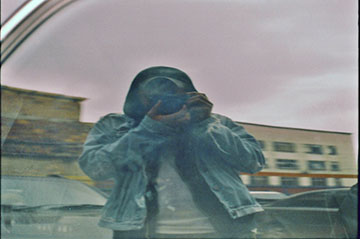By Juansebastián Zapata Mujica
Why Film Photography?
It was an accident. I had been working with indigenous people from the north of South America for about 3 years when it occurred to me that a film camera would be a great tool to have when working for long periods of time in a place with no electricity, a place like Sierra Nevada de Santa Marta, an isolated mountain range that runs through Colombia. That's how my interest in film photography began. It wasn't because of a vintage aesthetic nor to trend on Instagram. I needed to preserve my battery and didn't have a lot of money to buy extra batteries for my digital camera. A photographer friend suggested an analogue camera. We went to downtown Bogota, an area where you can find film photography products. I purchased a Vivitar V2000 with a 50mm lens for $69USD. I made some shots to test the camera; everything went fine.
A couple days after purchasing the Vivitar, I was back with the indigenous people of the Sierra Nevada de Santa Marta. With interests in sociological research, I was focused on recording situations of importance to me, more so than making beautiful photographs. By the side of the Iku people, also known as Arhuaco people, they were expecting to see themselves on the screen of the camera instantly, as it happened before. They usually don't like being photographed because the pictures never come back. But, they trust me because they have known me for years and we have built a relationship of confidence, friendship, and mutual support. They knew us because of the work with Daniel Mateus, a fellow sociologist/anthropologist.*
Arhuaco kids in Sierra Nevada de Santa Marta. 2017
I went back to Bogota and dropped off the film to be developed. I was astonished and excited. Maybe the chemical process, as Ciro Cuerra (director of the movie, "The embrace of the serpent") said, is beyond digital technology because through analogue processes the essence of things remain trapped, they are not converted to zeros and ones to then be transformed in a digital image.
Two examples of uses of photography by social researchers in Colombia
There have been many uses of photography in context with the rural people in South America. Colombo-Austrian anthropologist Erasmus Gerardo Reichel-Dolmatoff, for example, took many photographs in Sierra Nevada de Santa Martra from the 1950s - 1980s. He never gave them back. He made money and gained prestige in the academic world. As of today, after decades, his family still has the rights of the photographs and the indigenous whose parents are in those photos are still waiting to know and see a little bit more of their recent past.
In the early 60's, Colombian sociologist Orlando Fals Borda used photography while working with a peasant society in the Colombian Andes. He used photography to develop a rapport with the people and to finish a successful work that could be of benefit to them (not only for him and academic benefit). He took the photos and gave them back as soon as possible. This methodology attests to the backgrounds of his famous development of participative methodology in social sciences known a IAP (investigation-action-participation or; research-participative-action, its Spanish acronym).
Archival photographs are an invaluable source for people to recreate their history, understand their present and stake out their future.
Our proposal
In the XXI century, we use photography to strengthen friendships with indigenous people but also to create a gallery of memory. An indigenous photographic museum of printed photographs of the past, from historical archives; and the present, made by our work team and collaborators (if you have photos from Sierra Nevada de Santa Marta, you can help us) to serve as a mirror in which they can see themselves in a historical perspective. It generates debates about cultural change, resistance strategies and own identity.
Jinga y puerca negra / Arhuaco girl, from Sierra Nevada de Santa Marta, riding a pig
The effort to give back photographs and other products resulting from social research, following the IAP proposal, is based on the idea that people take ownership of the knowledge that has been produced about them. My personal work is (ethnographically and photographically) focused on understanding the relationship between Iku people and animals, in a context not only related to cultural change but also climate change.
Burning porcupine thorns
Tino and the ship
Today we have an archive of more than 15,000 digital photos, approximately 2,000 film photographs and around 1,000 prints in possssion of the Iku people. This is the start of the collection that will inaugurate the photographic museum for the people of Sierra Nevada de Santa Maria.
Juansebastián with his Vivitar camera








